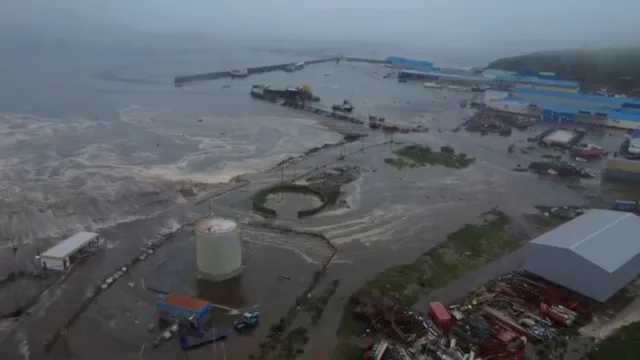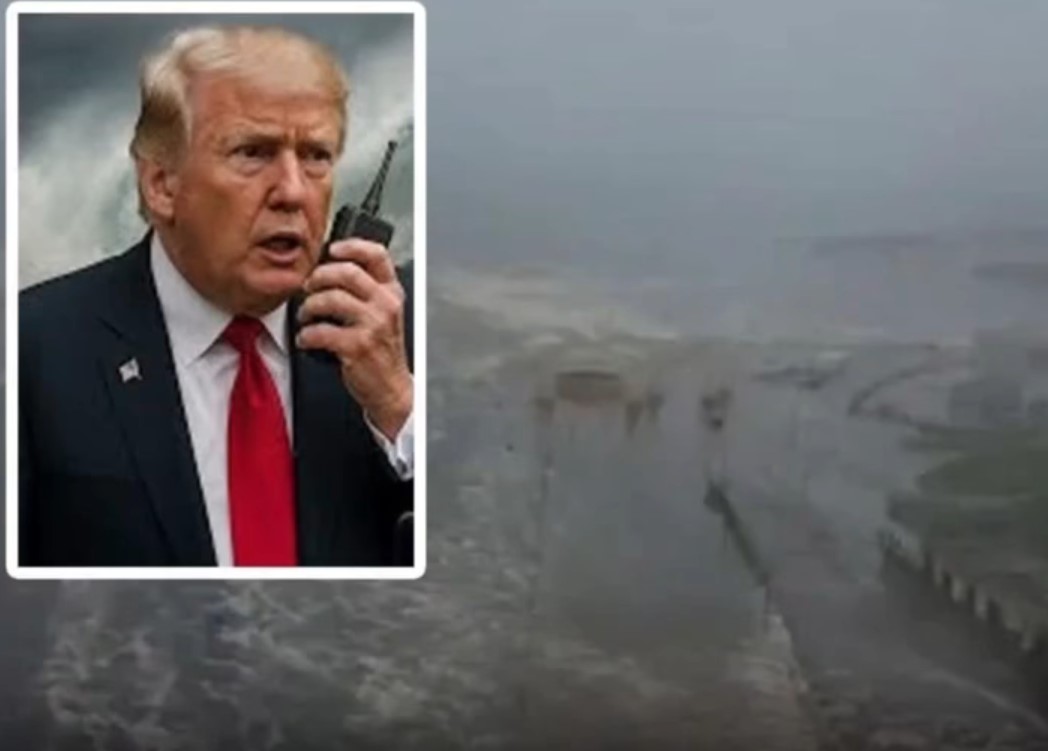At exactly 7:24 PM EST, the Earth moved — and not just a tremble, but a massive, ground-ripping jolt that registered 8.8 magnitude on the Richter scale. The epicenter: 84 miles southeast of Russia’s Kamchatka Peninsula, a remote but volatile region known for tectonic activity. Within seconds, the world began watching — and bracing.
This was no ordinary quake. Experts immediately labeled it the strongest earthquake to hit the Pacific Rim in over 14 years, comparing its power and potential impact to the infamous 2011 Japan earthquake, which left tens of thousands dead and reshaped global disaster protocols.
As data poured in, countries along the Pacific Rim — from Russia and Japan to the U.S. West Coast and island territories — activated their emergency systems. Tsunami sirens echoed across towns, and urgent advisories began broadcasting around the clock.
Waves on the Horizon: Tsunami Warnings and First Impacts

Within an hour of the quake, tsunami waves began reaching the Russian coastline. Footage shared by local residents revealed streets turning into waterways, with fast-moving currents flooding low-lying buildings. Emergency workers reported structural damage and several injuries, although the full extent remained unclear.
According to local officials, one woman sustained injuries after jumping from a window during the initial quake, believing a tsunami was imminent. Her condition is stable, but the fear she felt — and that many others continue to feel — speaks volumes about the collective trauma such disasters can reignite.
Japan, still scarred by the 2011 disaster, responded with swift precision. Tsunami barriers along its northern coast were reinforced. In Sendai and Miyagi Prefecture, loudspeakers broadcast evacuation orders, and people moved quickly but calmly to higher ground. Waves breached some coastal zones, though there were no immediate reports of casualties as of press time.
America on Alert: A Pacific-Wide Emergency
In the United States, the National Weather Service (NWS) began issuing alerts within minutes. Initial tsunami “watches” for Hawaii, California, Oregon, and Washington soon escalated to “advisories.” The NWS warned that tsunami waves could reach Los Angeles, San Francisco, and other key coastal cities as early as 4:00 AM EST.
A spokesperson from the U.S. Pacific Tsunami Warning Center stated:
“This is not a test. While we do not expect a Japan-level catastrophe, unpredictable surges and strong currents are highly likely. We urge residents to avoid all beaches, harbors, and low-lying coastal areas until further notice.”
Guam and American Samoa also activated civil defense protocols, opening shelters and preparing for possible wave impact. Ports were temporarily shut down, and all vessels were advised to move into deeper water to avoid damage.
A Glimpse into the Science Behind the Tremor
The earthquake originated along the Pacific “Ring of Fire”, a horseshoe-shaped zone where tectonic plates grind against each other. These interactions build pressure over decades — sometimes centuries — before releasing in a sudden burst of energy that causes seismic shaking.
Dr. Naomi Choi, a seismologist with the U.S. Geological Survey (USGS), explained:
“This region, near the Kuril-Kamchatka trench, is extremely active. An 8.8 magnitude quake is rare but not unexpected over geological timescales. What’s remarkable is how widespread its tsunami potential is — it could touch every nation bordering the Pacific.”
Despite the size of the quake, there are currently no reports of major aftershocks or volcanic activity. However, experts caution that aftershocks in the 7.0 range are still possible in the coming days.
Scenes of Calm Amid Uncertainty
Across the Pacific, millions of people are on edge, but panic has largely given way to organized response. In Honolulu, families packed essentials and moved inland. Police cars with loudspeakers made rounds through beachside neighborhoods. Tourists in Waikiki were escorted to upper floors of hotels or to designated safe zones.
On social media, trending hashtags like #PacificWaveWatch, #RingofFire, and #StaySafePacific flooded timelines with real-time updates, drone footage of flooded towns, and public service announcements in multiple languages.
At Tokyo’s Narita International Airport, dozens of flights were delayed as authorities reviewed infrastructure safety. Meanwhile, in Vladivostok, schools closed early and emergency shelters were set up in public gymnasiums.
Despite the global reach of this seismic event, governments were lauded for their rapid coordination. A representative from the United Nations Office for Disaster Risk Reduction noted:
“The systems put in place after the 2004 and 2011 tsunamis are clearly working. Early warnings, public awareness, and preparedness drills have already saved lives tonight.”
The Memory of 2011: A Nation Still Healing
For Japan, the emotional resonance of another Pacific megaquake is difficult to ignore. The 2011 disaster killed more than 19,000 people, destroyed entire communities, and led to the Fukushima nuclear crisis. Every new earthquake — especially one this large — reopens those wounds.
But it also reminds the world of how far preparedness has come.
Today, Japan’s disaster alert system is among the fastest in the world, capable of issuing text alerts seconds after a quake is detected. Schools and offices regularly conduct evacuation drills, and tsunami evacuation maps are widely distributed and updated.
Maya Tanaka, a survivor of the 2011 tsunami in Iwate Prefecture, shared on social media:
“We cannot stop the earth from moving. But we can learn, we can prepare, and we can protect each other. Tonight, I’m scared — but I’m also ready.”
What to Expect Next
As of now, waves measuring between 1 to 3 feet have reached parts of Russia and northern Japan. U.S. coastlines are being closely monitored, with projected wave heights currently estimated between 1 and 2 feet — enough to disrupt harbors and damage boats, but unlikely to cause widespread inland flooding.
Still, authorities urge vigilance.
The Pacific Tsunami Warning Center has announced continuous updates throughout the night and will adjust alerts based on real-time tidal gauge data.
If you’re in a coastal area, officials advise:
-
Stay off beaches, docks, and seawalls
-
Do not return to evacuated zones until cleared
-
Keep emergency radios and phones charged
-
Avoid rumors — follow official government channels only
A Moment of Unity Across Borders
In a world often divided by politics and culture, nature has once again reminded us of our shared vulnerability — and shared humanity.
Emergency teams from South Korea, Australia, and Canada have already offered assistance, should any nation request support. The International Tsunami Information Center (ITIC) in Honolulu is serving as a global coordination hub, helping synchronize data across agencies.
For now, the world waits.
The Pacific Ocean — so often associated with tranquility and vacation — has stirred. And while disaster may yet be averted in many places, the earthquake has left its mark: a reminder of nature’s power, of how quickly life can shift, and of how vital it is that we stay informed, prepared, and united.
Sources:

